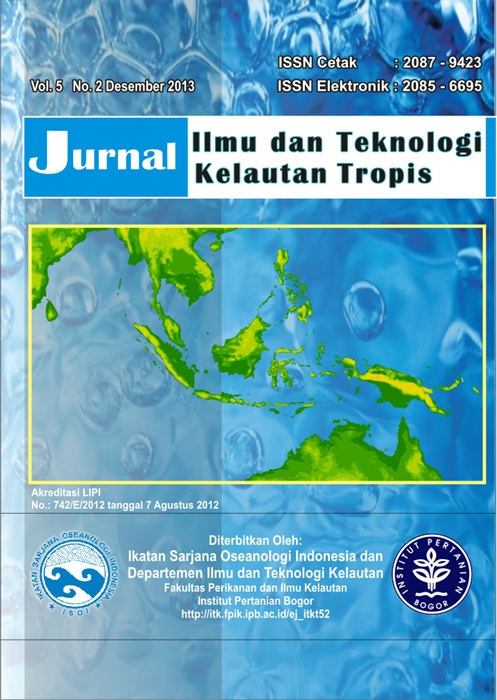FLUORESCENT LAMP LIGHT INTENSITY ON THE EMBRYOGENESIS DEVELOPMENT AND THE SURVIVAL OF PEARL OYSTER (Pinctada maxima) LARVAE
Abstract
One of the important factors in determining the success of pearl oyster (Pinctada maxima) culture is the quality and quantity of larvae produced in brood stock spawning process in the laboratory. Problems were often found in larval rearing and larvae attachment to the substrate that were low in quality and little number of larvae. The study purposes were observe the embryogenesis development and the survival rate of pearl oyster larvae under different fluorescent lamp light intensities. The study was conducted in August 1nd – 30th, 2011 in Sambelia Bumi Gemilang Hamparan Mutiara laboratory, East Lombok. Results revealed that different in light intensities effected the survivorship of the pearl oyster larvae significantly (p<0.01). Honest Significant Difference (HSD) test indicated that the highest survival rate occurred in dark condition (dark treatment) of 38%, followed by intensity of 10 watts (34.67%), 5 watts (30.67%) and 15 watts (4.66%) resfectively
Keywords: embryogenesis development, survivorship, pearl oyster (Pinctada maxima) larvae, fluorescent lamp light intensity
Downloads
The author submitting the manuscript must understand and agree that the copyright of the article manuscript must be submitted/transferred to the Jurnal Ilmu dan Teknologi Kelautan Tropis. This work is licensed under the Creative Commons Attribution-ShareAlike 4.0 (CC BY-SA) International License in which the Author and Reader can copy and redistribute the material in any media or format, and remix, modify and build material for any purpose, but they must provide appropriate credit (citing articles or content), provide a link to the license, and indicate whether there is a change. If you mix, change, or create material, you must distribute your contribution under the same license as the original.



.png)














